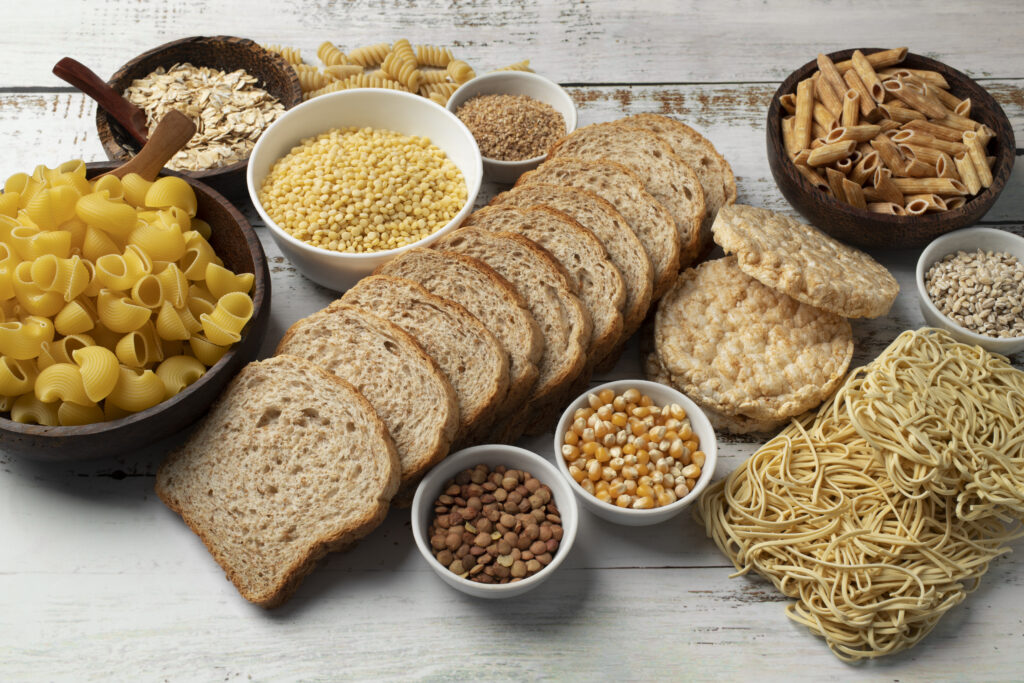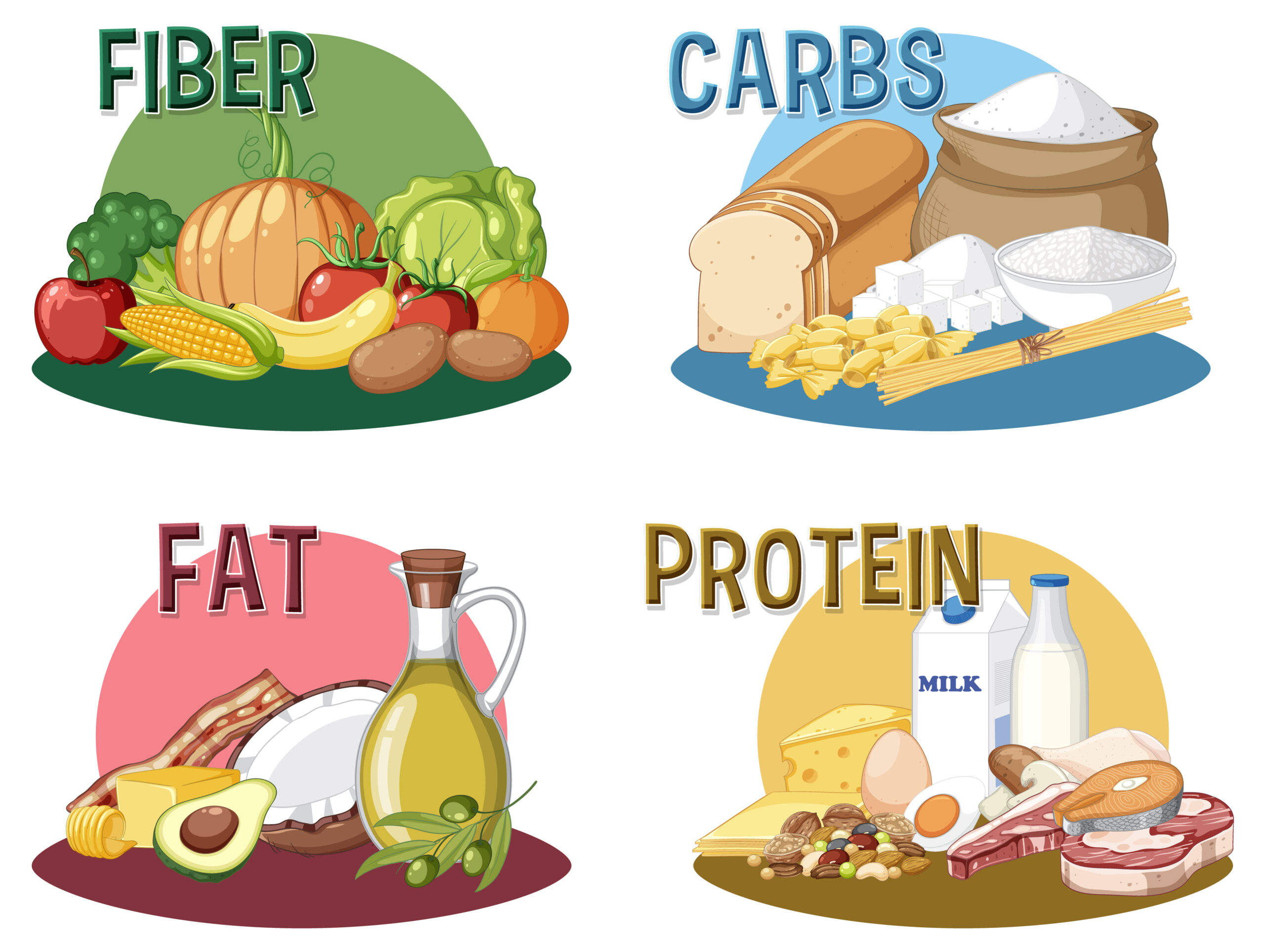Monomer of Carbohydrates : Understanding the Building Blocks of Energy
Table of Contents
Introduction to Monomer of Carbohydrates
Carbohydrates play a vital role as one of the necessary macronutrients that the human body needs for energy production. They play a vital role in various physiological processes and are found in a wide range of foods. To understand carbohydrates, it is important to delve into their basic structure and composition. In this article, we will explore the monomers of carbohydrates and their significance in energy metabolism.

Monomer of Carbohydrates
What are monomers? (Monomer of Carbohydrates)
Monomers are the individual building blocks that make up larger molecules. In the context of carbohydrates, monomers are the simplest units from which more complex carbohydrates are formed. These monomers are known as monosaccharides and serve as the foundation for the synthesis of various types of carbohydrate
Monosaccharides: The primary carbohydrate monomers
These monomers have the general formula (CH2O)n, where “n” represents the number of carbon atoms in the molecule. The most common monosaccharides include glucose, fructose, and galactose.
Glucose
Glucose is perhaps the most well-known monosaccharide and serves as a primary source of energy for cells. It is commonly found in fruits, vegetables, and honey. Glucose plays a crucial role in cellular respiration, where it is broken down to release energy.
Fructose
Fructose is a monosaccharide commonly found in fruits, honey, and some vegetables. It is the sweetest natural sugar and is often used as a sweetening agent in processed foods and beverages. Fructose is primarily metabolized in the liver and is an important energy source.
Galactose
Galactose is a monosaccharide that is less commonly encountered than glucose and fructose. It is found in dairy products and is often bonded with glucose to form the disaccharide lactose. Galactose is converted to glucose in the liver and can be utilized as an energy source.

Monomer of Carbohydrates
Disaccharides: Building blocks of complex carbohydrates
Disaccharides are formed when two monosaccharide units join together through a process called dehydration synthesis. The most well-known disaccharides include sucrose, lactose, and maltose.
Sucrose
Sucrose, commonly known as table sugar, is composed of glucose and fructose. It is found in many fruits and vegetables and is widely used as a sweetener in various food products. Sucrose is broken down by enzymes in the digestive system to release glucose and fructose for energy utilization.
Lactose
Lactose stands as the predominant sugar present in milk and dairy products. It consists of glucose and galactose. Lactose is broken down by the enzyme lactase in the small intestine to enable the absorption of its monosaccharide components.
Maltose
Maltose is formed by the breakdown of starch during digestion. It consists of two glucose molecules and is commonly found in germinating grains and malted foods. Maltose is broken down by the enzyme maltase into two glucose molecules, which are then utilized for energy.
Polysaccharides: Complex carbohydrates and their monomers
Polysaccharides are large, complex molecules composed of many monosaccharide units linked together. These carbohydrates serve as energy storage and structural components in living organisms. Some common examples of polysaccharides include starch, glycogen, and cellulose.
Starch
Starch is a polysaccharide found in many plant-based foods, such as grains, potatoes, and legumes. It serves as the primary energy storage molecule in plants. Starch is composed of long chains of glucose molecules, making it an abundant source of glucose for energy production in humans.
Glycogen
Glycogen serves as the reserve form of glucose specifically stored in animals, encompassing humans.. It is primarily stored in the liver and muscles and acts as a readily available source of energy. Glycogen is highly branched, allowing for quick and efficient breakdown to release glucose when needed.
Cellulose
Cellulose is a structural polysaccharide that forms the cell walls of plants. It imparts firmness and robustness to the cells of plants. Unlike starch and glycogen, cellulose cannot be digested by human enzymes. However, it serves as a valuable source of dietary fiber and promotes healthy digestion.

Monomer of Carbohydrates
Biological significance of monosaccharides
Monosaccharides play a vital role in various biological processes, primarily related to energy storage and utilization. Glucose, the primary monosaccharide, is the preferred fuel source for most cells in the human body.
Monosaccharides are utilized in two main pathways: glycolysis and glycogen synthesis. Glycolysis involves the breakdown of glucose to produce ATP, the universal energy currency of cells. The resulting energy is used for cellular processes, such as muscle contraction and brain function.
Glycogen synthesis occurs when glucose levels are high, such as after a meal. Excess glucose is converted into glycogen and stored in the liver and muscles for future energy needs. When glucose levels drop, glycogen is broken down into glucose to maintain a stable blood sugar level.
Monomers and human nutrition
Monosaccharides, as the fundamental units of carbohydrates, play a crucial role in human nutrition. Carbohydrate-rich foods, such as grains, fruits, and vegetables, provide a source of monosaccharides for energy production. During digestion, complex carbohydrates are broken down into monosaccharides, which can be absorbed and utilized by the body.

Monomer of Carbohydrates
Role of monosaccharides in the body
Monosaccharides, especially glucose, play critical roles in maintaining proper bodily functions. Glucose is the primary energy source for the brain and is essential for cognitive functions. It provides the energy needed for thinking, concentration, and overall mental performance. Glucose is also vital for muscle function. During exercise, glucose is broken down to produce ATP, which fuels muscle contractions. Adequate glucose levels are necessary for optimal physical performance and endurance.
Furthermore, glucose is involved in glycogen synthesis and storage. Surplus glucose undergoes a transformation into glycogen, which is subsequently stored within the liver and muscles. When the body requires energy, glycogen is broken down into glucose to meet the energy demands.
Monosaccharides in health and disease
The proper regulation of monosaccharides, especially glucose, is crucial for maintaining health. Disruptions in glucose metabolism can lead to various health conditions, such as diabetes and metabolic disorders.
Diabetes is a long-lasting medical condition distinguished by elevated levels of sugar in the bloodstream. In type 1 diabetes, the body fails to produce insulin, a hormone responsible for glucose uptake by cells. Type 2 diabetes occurs when the body develops resistance to the impact of insulin. Both conditions result in impaired glucose utilization and can have serious health consequences if left unmanaged.
Metabolic disorders, such as metabolic syndrome and obesity, are closely linked to disturbances in carbohydrate metabolism. These conditions are associated with insulin resistance, elevated blood sugar levels, and an increased risk of cardiovascular diseases.
Understanding the role of monosaccharides in health and disease can help individuals make informed choices regarding their diet and lifestyle to maintain optimal metabolic function.
Conclusion (Monomer of Carbohydrates)
Carbohydrates are essential macronutrients that provide energy to the human body. Monosaccharides serve as the building blocks of carbohydrates and play a vital role in energy metabolism. Glucose, fructose, and galactose are the primary monosaccharides, forming the basis for more complex carbohydrates.
By understanding the monomers of carbohydrates, we gain insights into their biological significance, including energy production, glycogen synthesis, and cellular function. Monosaccharides also have implications for human nutrition, blood sugar regulation, and overall health.
As we continue to explore the intricacies of carbohydrate metabolism, it becomes evident that the monomers of carbohydrates are fundamental to our understanding of energy utilization and its impact on human health.

